Penguin Moult – the scruffy phase.
Moulting King Penguins at Volunteer Point, the Falklands.
Moulting King Penguins at Volunteer Point, the Falklands. Photo credit: John Buckingham
Back to team bird for the keeper blog this week, and this time I’ll be covering penguin moult… because you just can’t have too many blogs about Penguins right? When you first see a moulting penguin, it can look quite shocking if you don’t know what’s going on. This is because unlike most seabirds that change a few feathers at a time, penguins shed all of their feathers at once, a process which takes around three to four weeks to complete. This drastic transformation is often referred to as a “catastrophic moult”.
Over time, any bird’s feathers may degrade or even break with everyday wear and tear. So it is important that feathers are replaced. Moulting is an essential part of penguin life and every adult penguin will need to moult once a year. All 18 species of penguin around the world go through this annual change and always look particularly scruffy during this period… so I thought it would be cool to follow the progress of one of our penguins Pearl whilst she went through her moult this year.
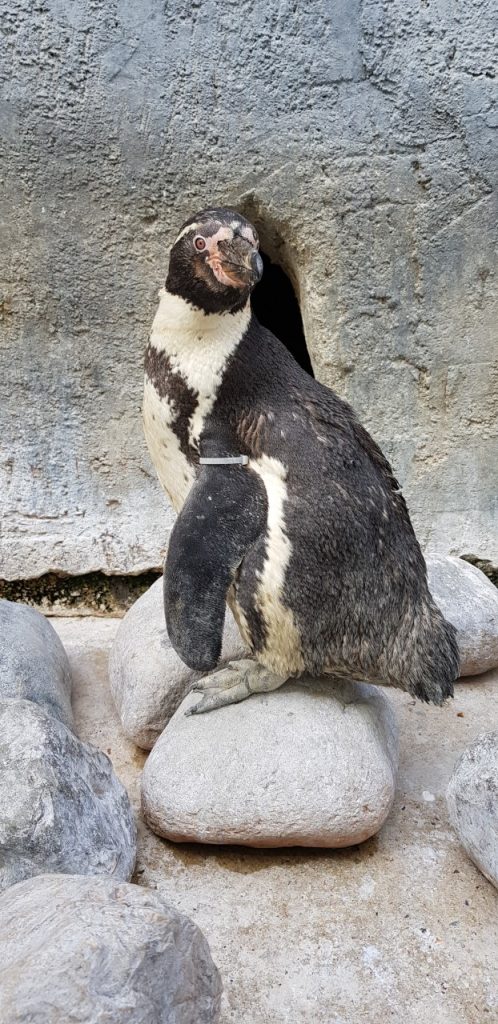
Moulting penguins cannot go to sea without their waterproofing. So, before they lose any feathers at all, penguins start to build up fat reserves. It is at this point that we noticed that Pearl was going to start her moult, and to us she looks quite large in this photo. Her face and flippers are starting to swell with fat reserves too. She has probably spent several days or even weeks to get to this stage but we’ll start off following her moult from here.
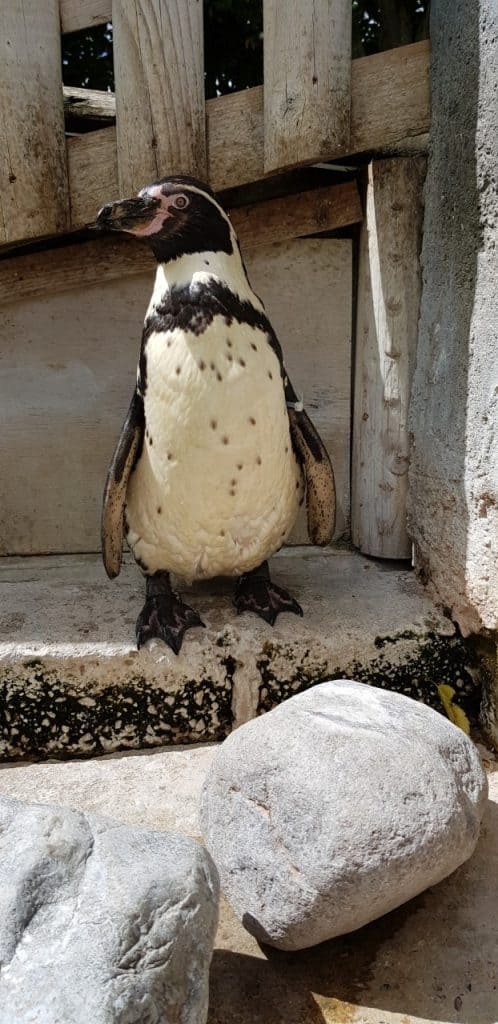
Pearl has probably reached her peak weight pre-moult here, and as Keeper Sarah from team birds says, she starts to resemble a butternut squash! As you can see, she is just starting to lose some of the feathers on her belly. Wild penguins put on these fat reserves to provide them with enough energy to last for the entire moult, because of course if they can’t enter the water without their plumage they cannot feed for the whole time they are in this condition.
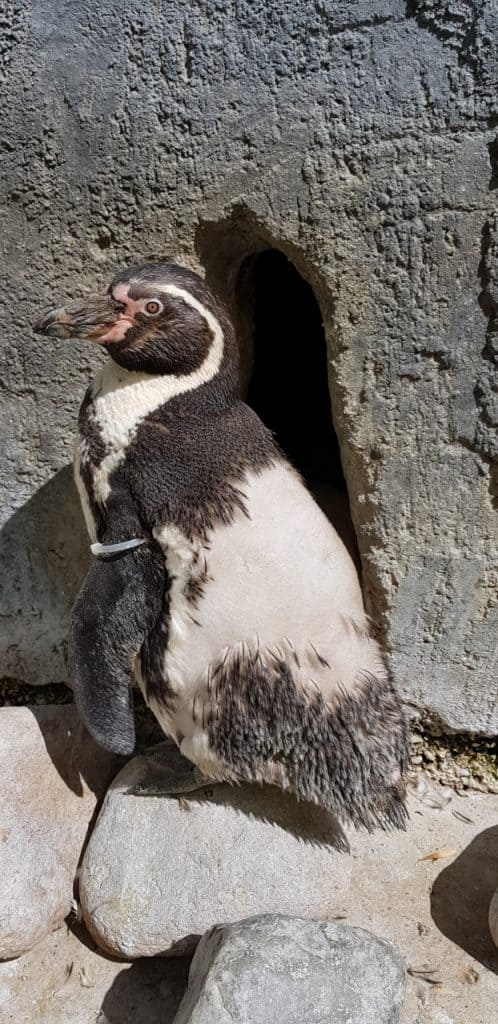
From this picture you can see why “catastrophic” is the perfect description for this cycle of feather change. Penguins seem to start losing the feathers on their belly and back first. I’m guessing this is because these are areas that they often preen (comb through with their beaks). As the new feathers are growing underneath the skin, they simply push the old feathers out. I love how fluffy they look, but I’m not such a fan of all of the feathers on the floor… someone has to clean up all of that mess… and that someone is usually me!
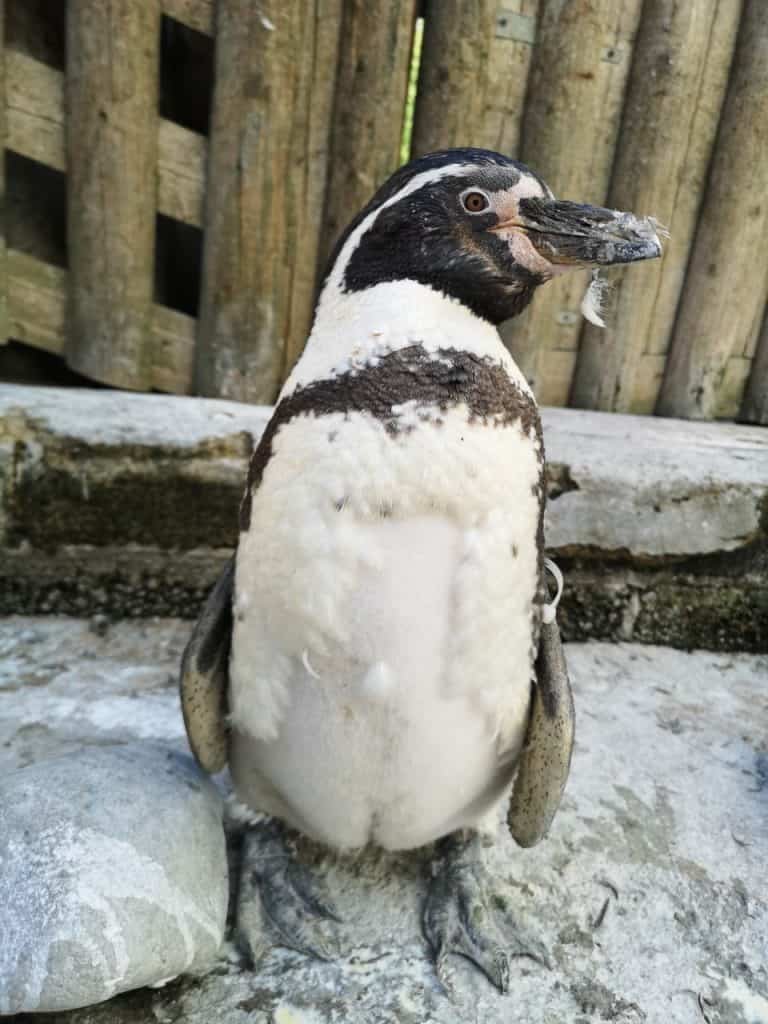
You can see the fluffy down feathers on Pearl’s belly here. Whilst she does look very scruffy, this is a perfectly natural process. What a feat of evolution to come up with such an extreme strategy for our most well adapted bird species for an underwater life.
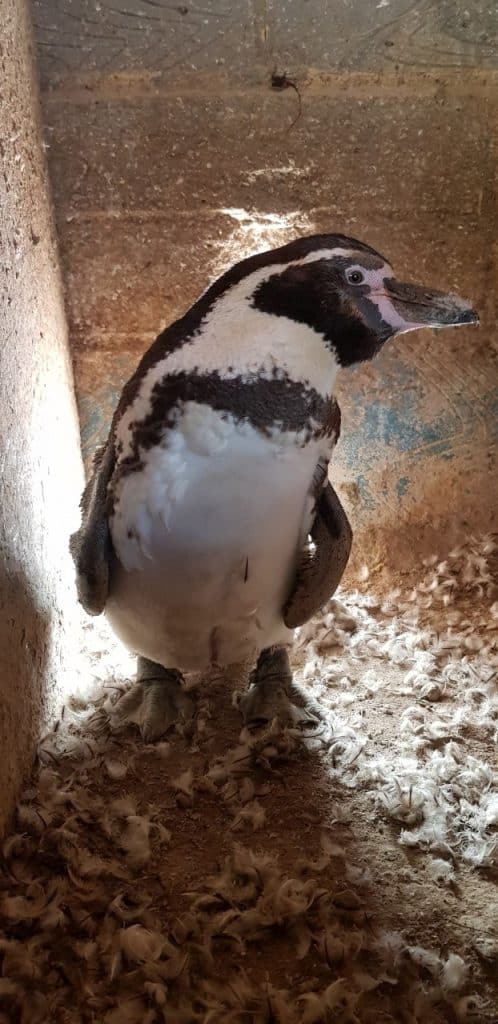
It was 25°C on this day which is no problem for our South American Humboldt Penguins as they nest on the edge of the Atacama Desert on the coasts of Peru and Chile. Sensibly though, Pearl spent a lot of the day chilling in the shade in her nest box with her little pile of shed feathers.
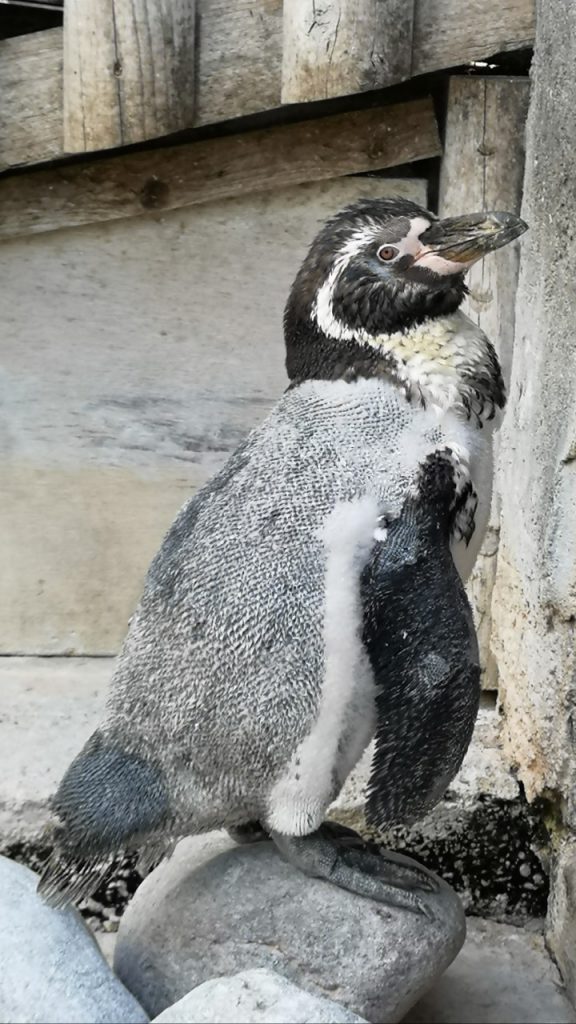
By now, Pearl just has a mane of feathers left to lose around her head and a few stray feathers on her tail and flipper. Quite often, and understandably, the penguins get a bit moody during the moult. When wild penguins are confined to the shore it can be a very stressful time. Energy levels are low by this point and the birds are eager to get back into the ocean to feed and drink. Pearl doesn’t have to worry about that here as we’re always on hand to give moulting penguins a top up feed; they don’t seem to have read the textbooks and are usually still keen to take fish from us.
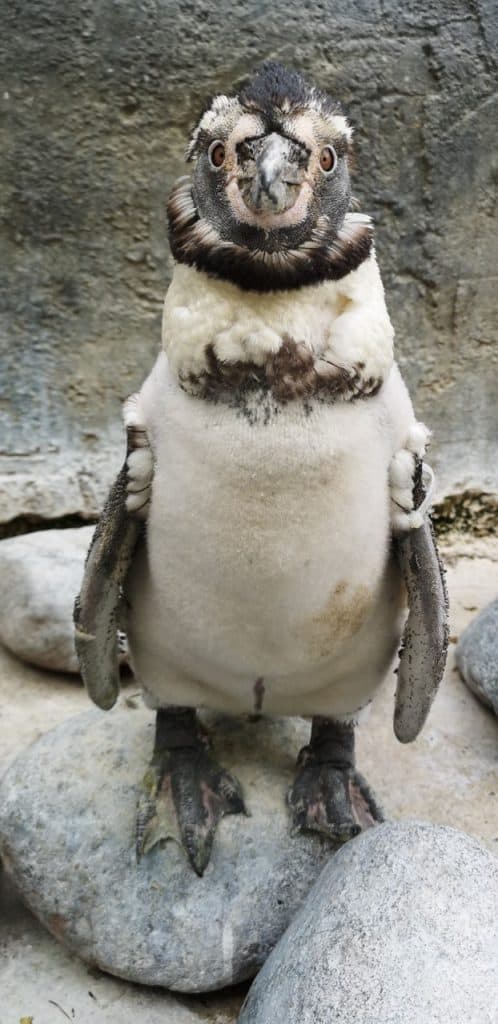
Doesn’t this photo just make you smile? Pearl has almost completed this stage of the moult and just has a few feathers left around her throat, head and flippers. Do you think she realises how funny she looks? We wouldn’t dare laugh at her…
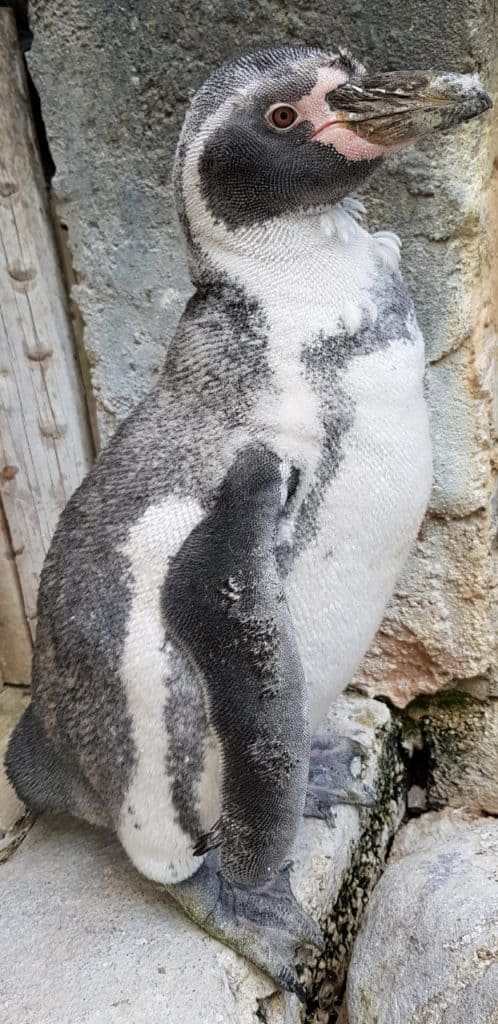
With just the odd feather left here and there Pearl is now looking much fresher. I think she looks a bit like a pin cushion with her new feathers sprouting through all over. She will spend a while looking like this before her waterproofing returns.
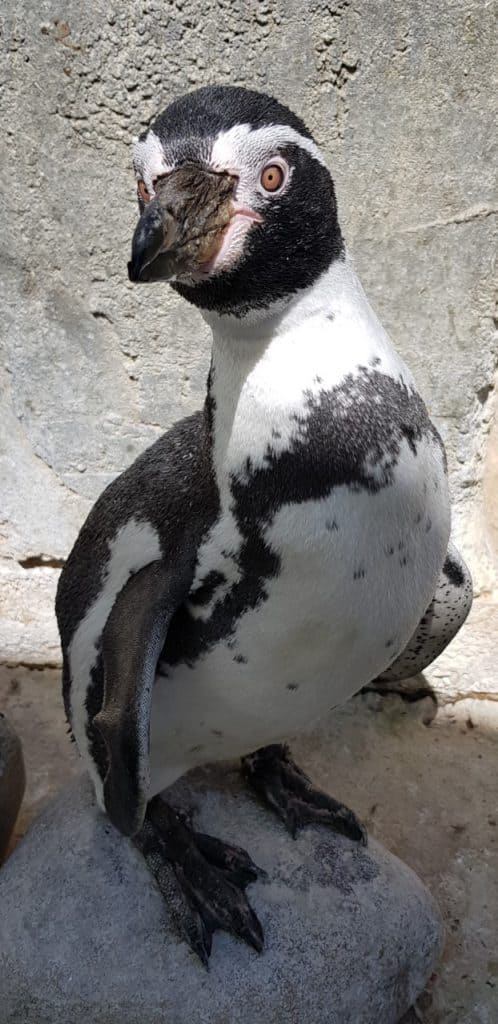
Pearl spent a few days with her buzz cut look and by day 12 was looking brand new! Her feathers will probably get a little longer but she certainly seemed ready to go back into the water. At this stage in the wild they would need to get back to sea to feed up and recover all of the weight lost during their time fasting.
And there you go, one of our adult penguin’s yearly moults from start to finish. I love the photo below of wild King Penguins; amazingly you can see the thousands of moulted feathers on the floor in the background!
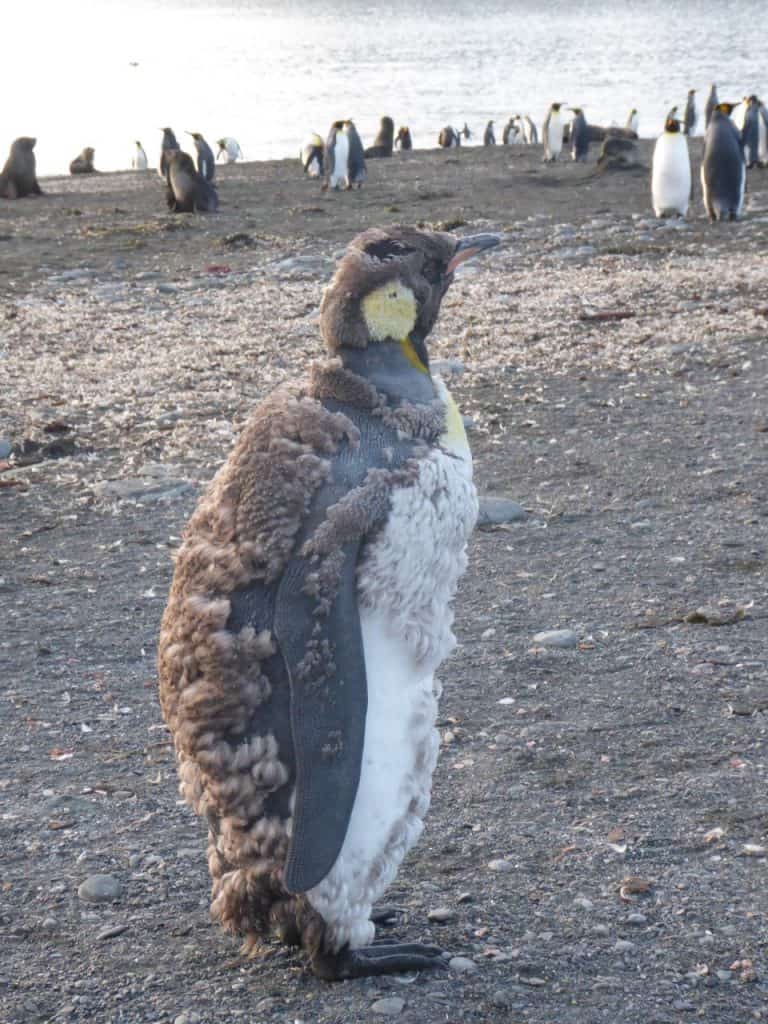
But it’s not just adults that go through a moult. In my previous blog here, I talked about penguin chicks. They spend most of their time in the nest covered in velvety down feathers. But just before it is time to leave the nest, the youngsters suddenly shed their down and grow their first set of adult-type waterproof feathers. An absolutely crucial asset to a sea going bird! Sometimes you can see the newly fledged chicks in the pool with a small amount of fluff left around their heads. This moult takes place out of sight in the nest for our Humboldt Penguins, but wild penguins can sometimes be seen out in the open going through this change, as you can see in the photos below.
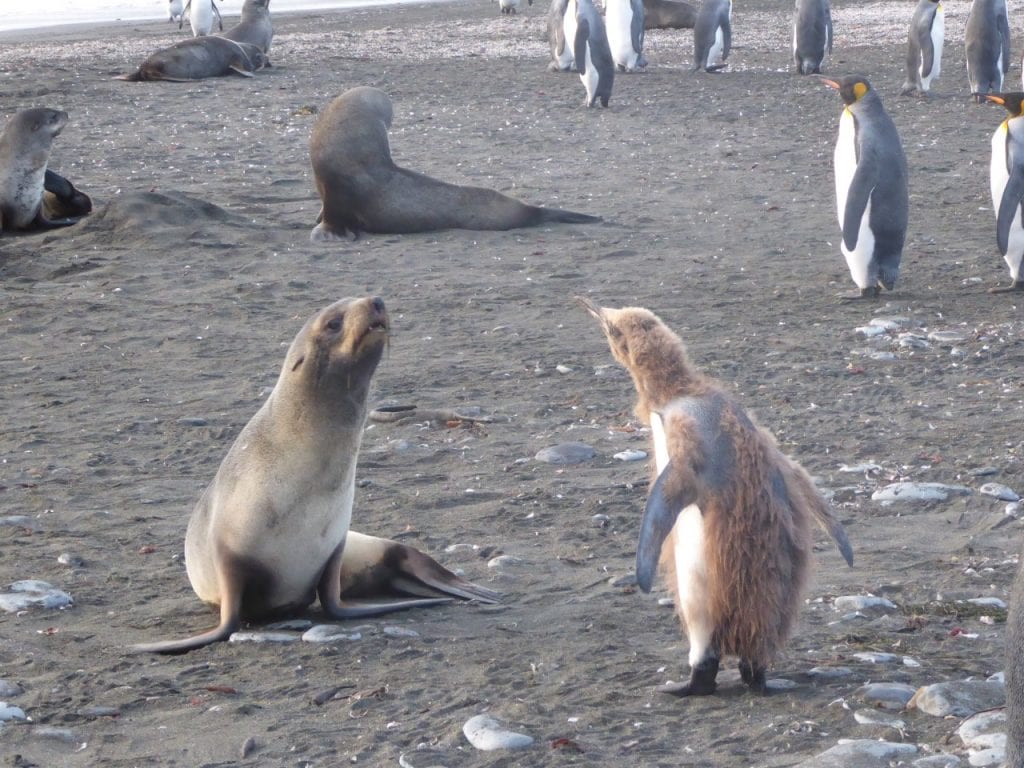
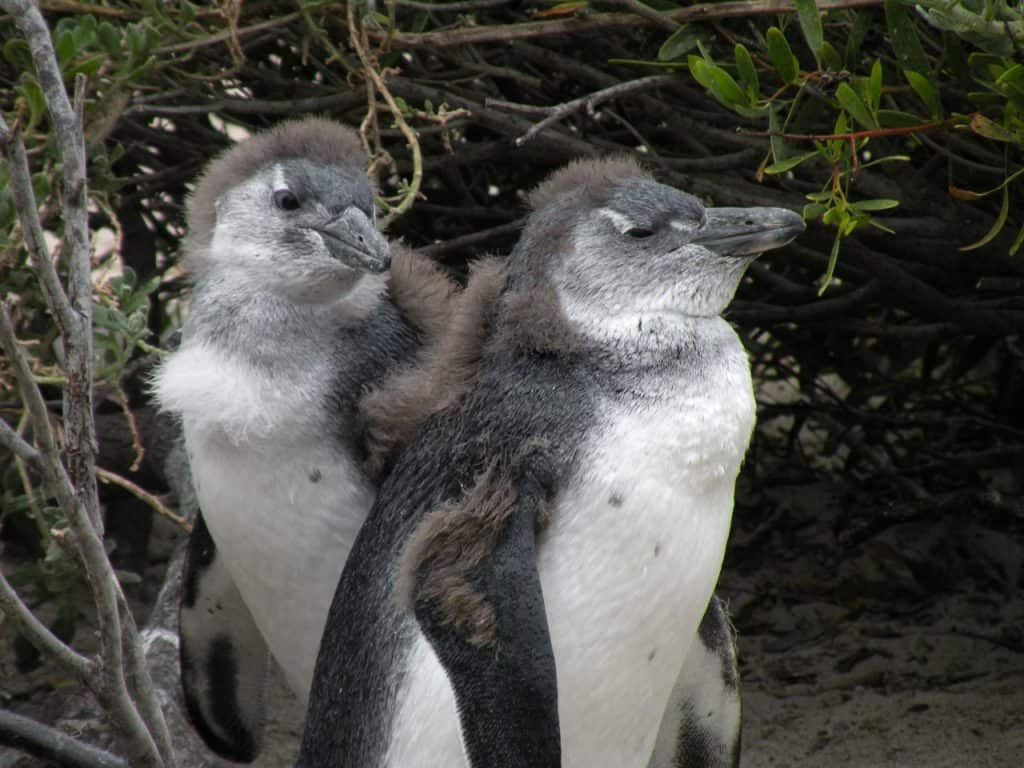
Penguin youngsters are often a different colour to adults, and our Humboldt’s Penguins go through a transformation when they are a year old. For their first year their heads are entirely grey and they also lack the band of spots across their breast. But after this first moult, their adult plumage replaces their juvenile feathers and the change is quite remarkable! It certainly takes us a little while to get used to their new look. Below are some photos of Pearl and Kermit’s chick from 2019, going through the moult at one year old in 2020.
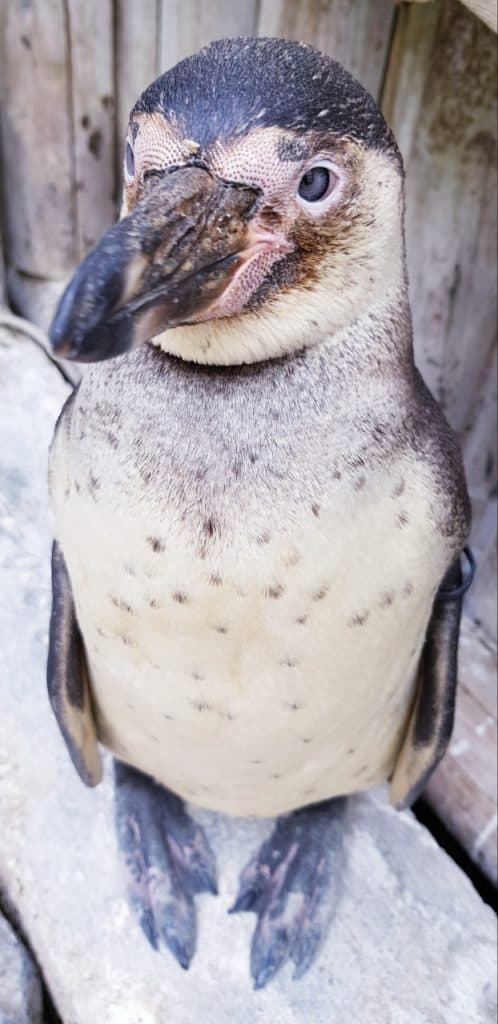
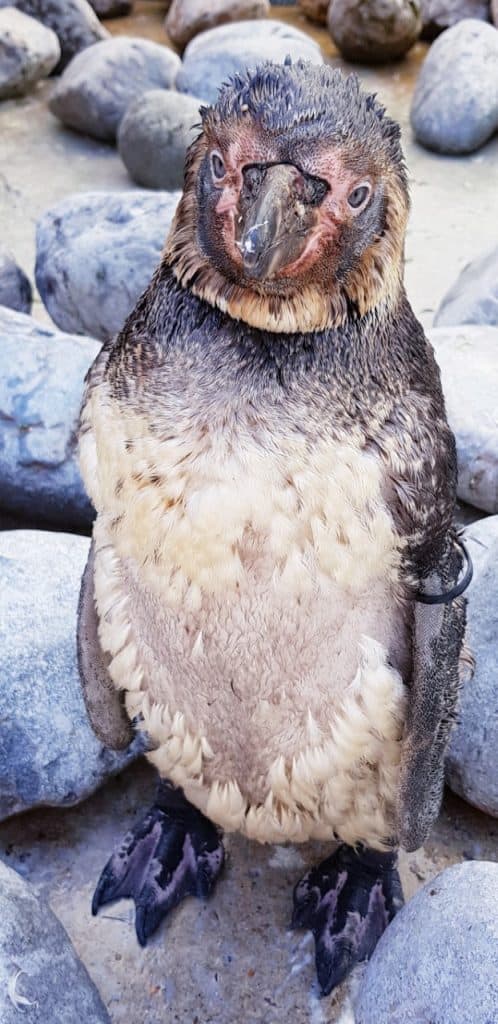
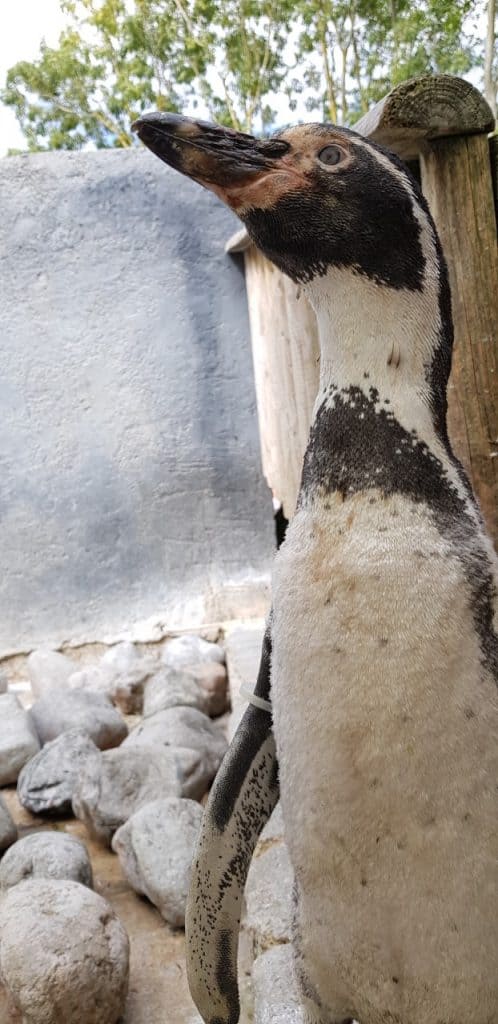
Oh, and lastly, a huge thank you keeper Sarah (on team birds) for helping me take photos of Pearl, and to my friends Ian and John from Sandwich Bay Bird Observatory for letting me use their photos of wild penguins. I think between them they must’ve have nearly seen all of the species of penguins around the world… something for me to aim for!


